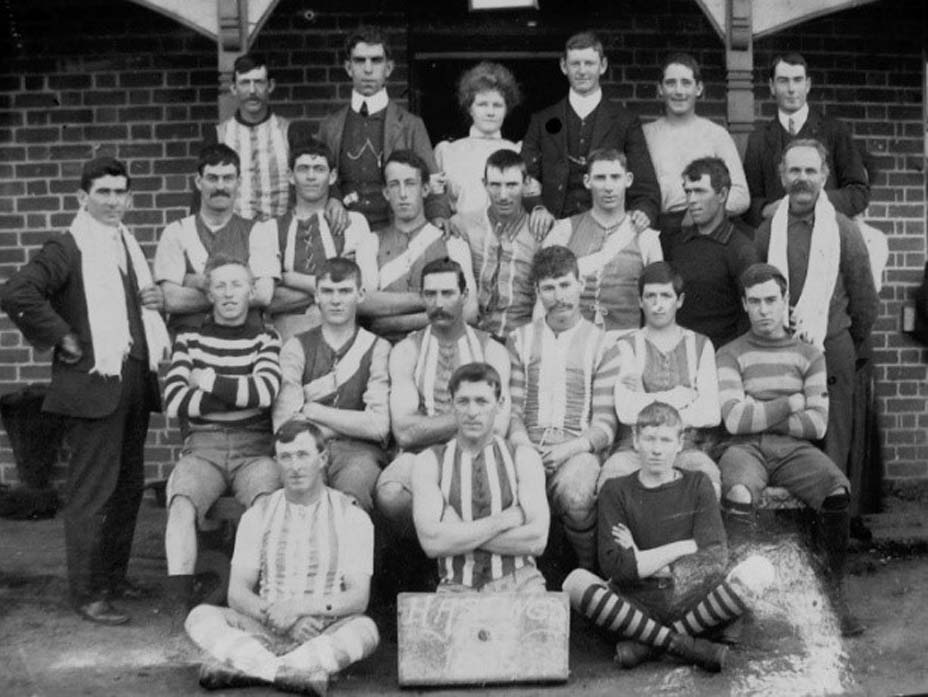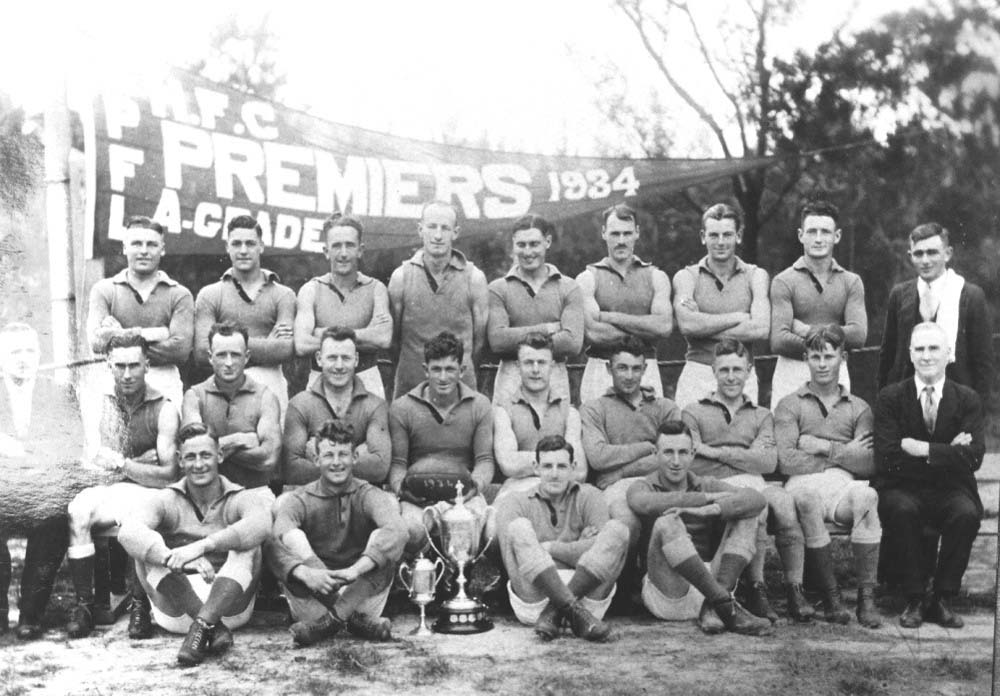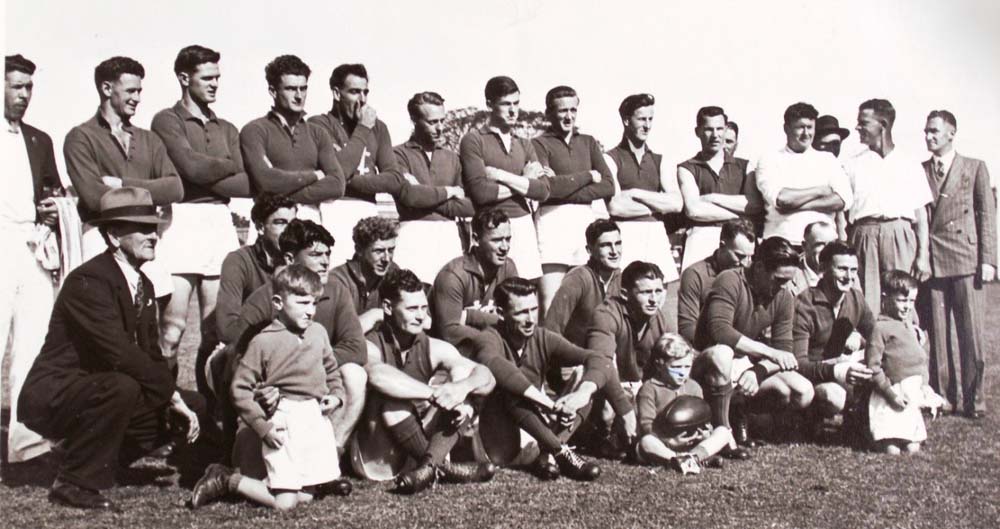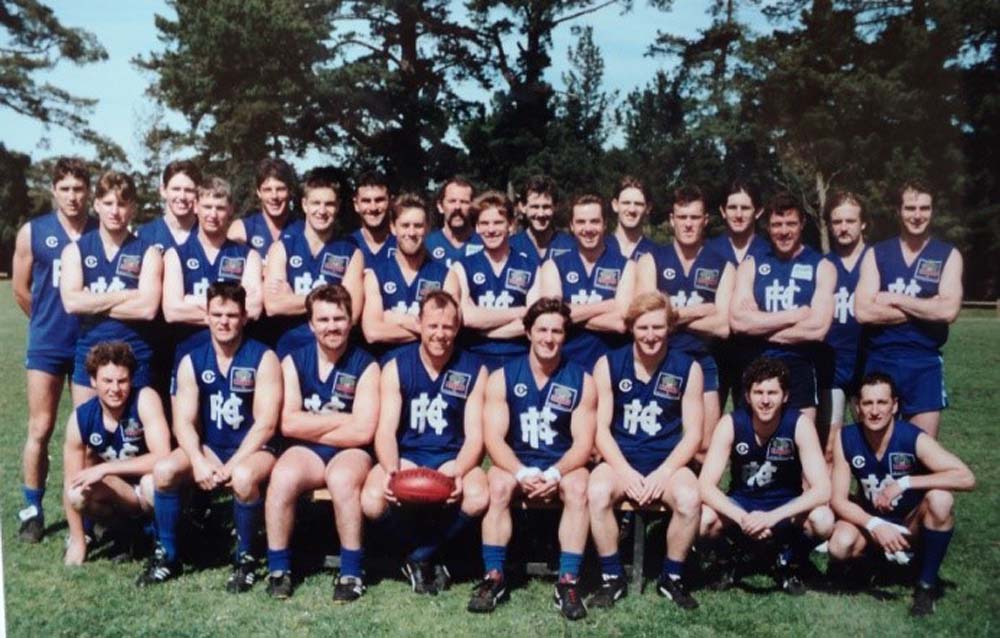By Lance Hodgins
Part One
HASTINGS Football Club has an outstanding history. Since its founding in 1889, there have been many premierships – and some legends, such as the great John Coleman.
The Blues won their first flag in organised competition in 1905; since then there have been seventeen more. This makes an average of one every six years!
So … which was the greatest side of all time?
Measuring “greatness”
I do not propose to open that age-old argument and put yesterday’s team on the field against one of today. Today’s footballers are taller and faster, train harder, have experienced coaches, use advanced tactics and would appear to have a decided advantage in what has become a very different modern game.
A team’s greatness can only be judged fairly by putting it up against the opponents of its day. And that competition would have to be complete – that is, it should involve all of the best available teams in the region. Throughout history this has not always been the case.
Nor does the greatest mean the most memorable. The passage of time can magnify past exploits – as in “the good old days”. On the other hand, time can make us dim the past and focus more on the legends of our own lifetimes. Either way, personal feelings and prejudices do influence our judgement and the outcome is quite subjective.
Therefore, “greatness” will be interpreted as just how dominant a team was over the competition of its day. Let the scoreboard tell the truth.

Greatness means premierships
A starting place is to recognise that for a team to be great it would have to be a premiership team. And there were plenty of them.
Four sets of triple flags stand out: 1908-10, 1912-14, 1946-48 and 1975-77 and a string of single premiership teams: 1905, 1934, 1972, 1992, 1995 and 2016.
This makes a total of 18 teams to consider.
The single premiership teams
The most recent flag was won in 2016 when Hastings fought their way up from fourth place to beat Frankston by 27 points. This premiership was won in the Nepean Division which existed alongside an arguably stronger Peninsula Division. In terms of our analysis, where the competition has to be the best available in the region, this would not be the case for the 2016 team.
Similarly with the 1992 premiership which was won in the MPNFL Second Division. Hastings had suffered compulsory relegation three years earlier, despite having five wins for that season. The 1992 flag over Rosebud marked a fine recovery for a brilliant team and their entry back into Division One.
The earliest Hastings premiership was in 1905 and it is often overlooked. It came three years before the first official Peninsula Football Association was formed. Dromana had organised a competition and donated a trophy which they confidently expected to win. When it was obvious that this wasn’t going to happen – they were beaten twice by Hastings – they pulled out of the competition. This left Hastings clearly on top of the ladder, and they rightly claimed the premiership – and the missing trophy. Unfortunately for our analysis, one main team was missing: Frankston had decided to play that year in a suburban league.
Two flags were won after very inconsistent seasons. The 1972 flag was admirably won from fourth spot, but only after suffering five losses and a draw during the season. The 1995 premiership year was also a season of ups and downs. This Blues team had a brilliant finals series and finished with a big win over the Pines in the grand final, but only after suffering five losses – some of them big ones – along the way.
One single premiership team has a far better record than the rest. The 1934 team of Tim Mirabella had its colours lowered only once – by Sorrento, who the Blues ended up beating four times that year. This side was not short of local talent: schoolteacher Jack McMillan set an MPFL record of 118 goals which stood for over a decade. With only one defeat, the 1934 team would have to go into the mix for consideration as the greatest of all time.

The triple premiership teams of the 70s
And so to the teams which won the four triple premierships. All of these teams were brilliant: they dominated not just a single year but a distinct period. Just how great were they?
The Blues scored their most recent triple premiership in the mid 70s. In 1975 they finished in second place on the ladder after four losses and trounced Carrum by 54 points in the grand final. The 1976 flag was won after 6 home and away defeats but the competition was so even that this still left the Blues equal first on the ladder. In the grand final they defeated Mt Eliza – who had beaten them twice in the regular season. The 1977 Blues were the most dominant of the mid-70s three-peat. They thrashed Mornington by 60 points in the grand final but they had lost four games to get there, including a loss to Mornington in the second semi-final.
Fourteen home and away defeats between these three teams puts a small “smudge mark” on their dominance.
The famous Coleman era
Thirty years earlier, in the late 1940s, George Slocombe led a trio of Hastings teams to successive flags. In 1946 Hastings lost only one game and finished equal first on the ladder. They were beaten in the second semi-final before coming back to take the flag. One defeat puts them on the same level as the 1934 team.
The 1947 team dropped three games on their way to the flag, but they stormed home with the help of the mercurial John Coleman who kicked 7 and 11 goals in the two finals. Better things were to come: Slocombe took the Blues to their three-peat in 1948. They swept through the season without dropping a game and then dominated the finals. They were a mature and experienced side with an average age of almost 25 years – Coleman was the youngest at 19.
Many people still believe that this 1948 team was the best ever seen on the Mornington Peninsula. So far, they would have to be our top pick for “the greatest”.

Challengers from earlier times
If we dig deeper into Blues’ history, however, can we find a worthy challenger to the “Invincibles of 1948”? They would need to have gone through an entire season undefeated.
In the early years of the twentieth century, Hastings seemed to have a stranglehold on the flag. In 1911 it was only a free kick away from making it a clean sweep from 1908 to 1914 – which would have made seven in a row!
In 1908 Hastings were beaten by Somerville in their semi-final and then asserted their right as minor premiers to challenge Frankston – who refused to turn up. The following year in 1909, whilst Frankston was suspended, the Blues still suffered two losses and a draw on their way to the flag. Frankston returned to beat Hastings during the regular 1910 season but the Blues had their revenge over them in the grand final with a narrow three-point win.
In 1912 the Blues went though the home and away season without a loss, but then were beaten in their semi-final by a point. They went on to defeat Frankston and take the flag.
The Hastings dominance continued into 1913. Jack Campbell led a Blues powerhouse which included Len Incigneri, “Nipper” Floyd, Hughie Carmichael and “Pompey” Francis. They went undefeated throughout the season and in the grand final they held their opponents, Somerville, to a measly 6 behinds.
The 1914 team suffered two losses during the regular season and still finished on top. They dropped their semi-final to Mornington and ultimately came back to beat them in the grand final.
Two contenders stand out
Of the 18 Hastings premiership teams, only two of them went through the entire season, including finals, without a loss: 1913 and 1948.
Which team deserves to be called “The Greatest”?
To be continued next week…




